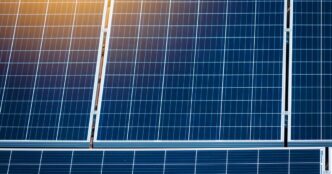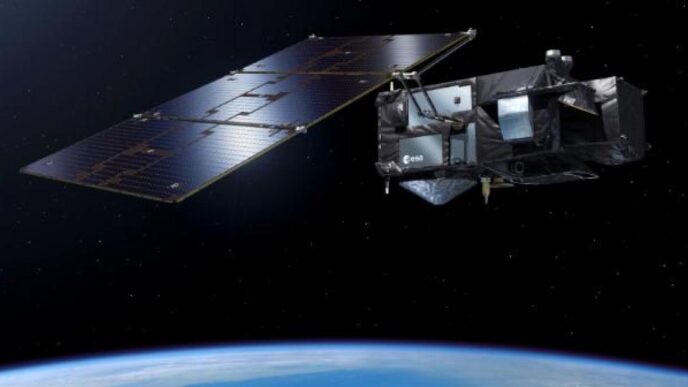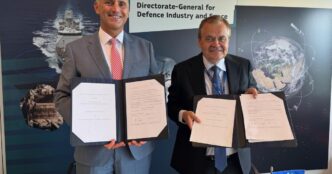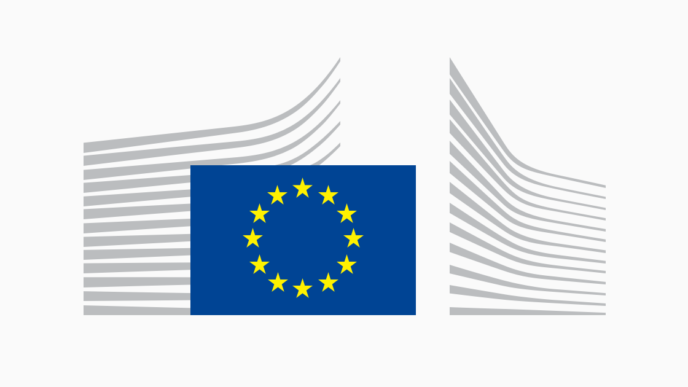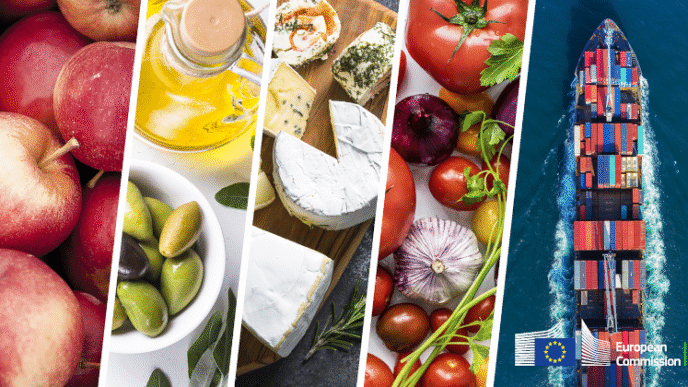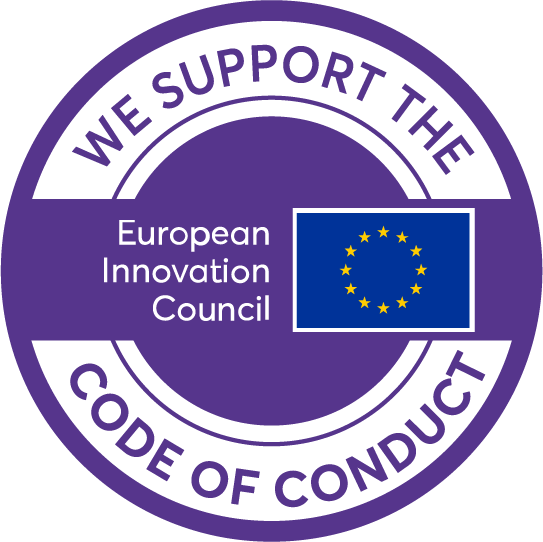Solar energy is one of the world’s most abundant and easily accessible sources of renewable power. But how well do you know it?
Several distinct technologies harness the sun’s power in different ways. Photovoltaic (PV) panels convert sunlight into electricity. Solar thermal panels use the sun’s energy to produce heat. Concentrated solar power uses mirrors to concentrate sunlight and produce heat and steam to generate electricity.
In 2008, solar photovoltaic accounted for just 1% of Europe’s electricity. Today it represents 10% in the EU and even 23% in Greece, 19% in Spain or 16% in Germany, making it one the EU’s fastest-growing energy sources. Nearly 150GW of new capacity, which could power around 42 million households,[1] was added between 2022 and 2024 and a further 70 GW is expected in 2025. This rapid expansion reflects the strong momentum for rolling out renewable energy in the EU. With the EU’s commitment to reaching climate neutrality by 2050, solar energy is expected to deliver a major share of the Union’s renewable power. We have set ambitious targets. By 2030, the EU aims to reach at least 700 GW of new solar generation capacity, four times more than in 2020. This shift is already well underway: in 2023 renewables overtook fossil fuels in electricity generation (1,200 TWh vs 788 TWh) and by 2024, it reached a record 47% of overall electricity generation. Driving this surge are wind and solar — with solar alone jumping by 15% in just one year.
Despite its rapid growth and clear climate benefits, solar energy, and especially photovoltaics, are still surrounded by a few persistent myths and misunderstandings.
Let’s shed some light on the facts. Here are 5 key things you should know about solar.
1. Photovoltaic systems are safe
Solar panels are a great addition to your home as they generate renewable electricity – even on cloudy days. And when it comes to safety, they’re among the most reliable technologies available. While any electrical device carries a potential fire risk, incidents involving solar installations are exceedingly rare. SolarPower Europe’s data from Germany (between 1993 and 2013) and the Netherlands (between 2015 and 2018) shows that fires caused by solar panels occur in just 0.006% to 0.014% of cases, a rate significantly lower than that of many common household appliances. When issues do arise, they are typically linked to poor installation or faulty components, not the solar technology itself.
Across Europe, strong safeguards are in place to keep solar installations safe. All solar panels, whether imported or manufactured in the EU, must meet strict technical requirements under EU product safety legislation and standards. To ensure systems are installed properly, EU countries must have certification schemes (or equivalents) for solar photovoltaic installers and designers, as required by the Renewables Directive. These schemes include training programmes and public lists of certified installers. On top of that, EU rules also cover how photovoltaic systems connect to the electricity grid, while allowing some flexibility for national requirements.
2. Solar panels take up very little space
Solar energy comes in many shapes and sizes. Solar photovoltaic and solar thermal panels can be installed in compact spaces such as rooftops and balconies, and even integrated into buildings as solar roof tiles or facades. In some EU countries, homeowners and tenants can install plug-in solar panels on balcony railings, walls or terraces. These systems connect directly to the household grid, providing clean electricity for self-consumption, and helping to cut energy bills.
Not every building is ideal for installing solar panels – but that doesn’t mean you’re left out. Energy communities and energy sharing can provide a smart solution. Through energy communities, citizens, local authorities and businesses can team up to invest in clean energy projects, including solar energy, at local level. This allows them to produce, sell and use renewable energy collectively – even if the panels aren’t on their own roofs. Energy sharing allows you to share the electricity you generate with neighbours, friends or relatives. In short, we don’t need solar panels on our own rooftop to benefit from solar power in our home.
Large-scale solar farms may take up more land, but their efficiency is rapidly improving. For instance, the Cestas Solar Park in France spans 265 hectares (equivalent to roughly 8% of the size of the Charles de Gaulle Airport in Paris). With an installed capacity of 300 megawatt-peak, it can produce enough power for more than 70,000 households per year.
To make the most of available space, innovative and integrated approaches like agrisolar show great potential. These systems combine solar power production with agricultural use, allowing land to remain primarily dedicated to farming. Meanwhile floating solar installations on bodies of water, sometimes paired with hydropower, offer another innovative solution to expand solar generation without competing for land.
3. Solar plants and wildlife co-exist on friendly terms
Like all human activity, using solar technologies has an environmental impact. But it’s climate change that poses the single greatest threat to biodiversity, affecting countless species and ecosystems across Europe and the globe. With an average temperature increase of 1.5°C, 6% of insect species, 8% of plant species and 4% of vertebrates would lose more than half of their habitat. Currently we are heading/tracking towards an increase of 2°C and more. Without urgent action, far more species will be pushed to the brink.
Renewables like solar energy are crucial for cutting greenhouse gas emissions by replacing electricity generated from fossil fuels. In doing so, they play a key role in tackling global warming and its growing threat to wildlife.
As highlighted by research from the European Commission’s Joint Research Centre (JRC) – the expansion of renewables, including solar, must be carefully managed to safeguard biodiversity. Climate action and nature protection can and must go hand in hand.
With good planning, the deployment of renewables can benefit ecosystems. Solar farms can support habitat restoration on degraded land, while other innovative approaches include repurposing former industrial or mining land, installing floating solar on artificial lakes and other bodies of water, and designing sites to enhance biodiversity and enable wildlife mobility.
Most solar power systems in the EU are installed on rooftops – already built-up spaces that exert no additional pressure on land or nature. Rooftop solar is quick to install, helps protect consumers from energy price volatility, and avoids land and biodiversity conflicts. According to scientific studies, rooftops could provide almost 25% of the EU’s electricity needs – a huge potential to tap into.
4. Solar energy is affordable
In 2024, renewables produced nearly half of all electricity in Europe, up from 38% in 2021 and 30% in 2015. This steady rise is driven by the EU’s target of reaching at least 42.5% of renewables in the overall energy mix by 2030. Yet, despite this growth, households and businesses have faced higher energy bills due to the energy crisis. Price spikes have been particularly noticeable since the end of 2021 due to Russia’s weaponisation of its energy exports and the EU’s reliance on imported fossil fuels. As of 2024, fossil fuels still account for around 28% of the EU’s electricity generation.
Solar energy, like wind, is a far more affordable alternative. According to the International Energy Agency, solar is now among the cheapest options for new electricity generation. The price of building new solar capacity has dropped sharply over the last decade, both for photovoltaic and concentrated solar power. Solar photovoltaic now costs less than half as much of coal – another important reason it’s become a major contributor to the EU’s power supply.
As well as the lower costs and emissions, expanding our solar capacity helps wean the EU off imported energy sources like gas, and strengthen our energy independence.
5. Solar energy can strengthen our energy system’s resilience
A resilient energy system is essential for ensuring Europe’s energy security, economic competitiveness and public safety. Solar energy has a key role to play.
One of the major advantages of solar generation is its often decentralized nature: much of it is produced close to where it is used, helping to reduce losses and improve the energy system’s resilience. While large utility-scale solar plants contribute significantly, rooftop photovoltaic on homes, businesses and industrial sites made up 58% of the EU’s solar photovoltaic installations in 2024, compared to 42% utility-scale solar.
When combined with energy storage, the contribution of solar energy to the resilience of the energy system becomes even more powerful. Batteries allow solar systems to supply electricity even at night or during grid disruptions. During the April 2025 blackout in the Iberian Peninsula, for example, the University of Almería remained open thanks to on-site solar and battery storage. The impact of the blackout lasted 10 seconds, which is the time it took to activate the emergency power supply.
While solar is a variable energy resource, grid operators – those responsible for managing and operating the electricity grids – have a toolkit to ensure the reliability and flexibility of the electricity system. A diverse mix of variable renewables, such as solar and wind, can be effectively balanced across the grid with adequate transmission capacity and flexibility, such as that provided by energy storage and demand response – that is, when consumers shift electricity use to other periods, such as when supply is more abundant (and cheaper). In addition, firm low-carbon energy resources such as geothermal energy, sustainably sourced biomass and biogas and nuclear power, can help fill the gaps, providing power regardless of the weather. Together, these resources can deliver a secure, low-carbon electricity system that meets demand around the clock.
And there’s more: solar photovoltaic systems can also contribute to grid stability by providing essential grid services that make the whole system not only greener, but more resilient.
Conclusion
Solar energy has come a long way since 1839, when French physicist Edmond Becquerel first discovered that sunlight could generate electricity. Today it’s far more than just a clean and abundant energy source, it’s a driver of economic innovation, jobs and sustainable industry in Europe.
The solar workforce is growing fast: the EU photovoltaic sector employed 826,000 people by the end of 2023, a 27% increase from 2022. If this trend continues, Europe could see more than 1 million solar workers by 2027, according to SolarPower Europe.
Beyond jobs and innovation, solar energy also strengthens Europe’s energy independence. By generating clean electricity at home, we reduce our reliance on imported fossil fuels, improve energy security and help households and businesses cut their energy bills.
